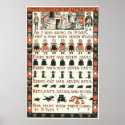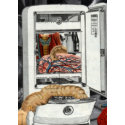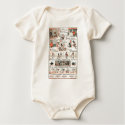While baking soda (bicarbonate of soda) is an excellent and safe household cleaner, there are some things you should know about it -- and other household cleaners.
Baking soda is not officially a disinfectant; it has not been rated as such by the EPA and it is known to generally not be effective against bacteria, including salmonella, E. coli. and staphylococcus. (Neither is vinegar, by the way; though the 5% acetic acid in vinegar does kill some bacteria and viruses, it does not, for example, kill staphylococcus.) However, regular cleaning and good-old-fashioned elbow-grease will address most household cleaning concerns -- including with simple baking soda, vinegar, and basic soap and hot water.
In fact, even when there are flu outbreaks, reasons to fear bacterial infections, persons with weak immune systems in the home, and other reasons to really be concerned, a good scrubbing with simple cleansers and hot water are the place to start. While you do want to remove the dirt and avoid the perfect conditions for bad things to grow in, you don't want to over-strip our world from the good stuff -- the good bacterias which naturally keep the bad bacterias at bay. And even when bad stuff is present, you have to scrub away the dirt to get to the bad stuff itself.
For example, a recent study found that one of the difficulties in disinfecting salmonella was in getting past the biofilms. In the study, rice vinegar just couldn't get past the biofilms (the slimy stuff that forms in wet or humid conditions) to disinfect as well as expected. In other words, scrub that cutting board good and hard using hot soapy water -- and then, if you feel it's warranted, apply the disinfectant. It's similar to how vegetables need to be scrubbed to really remove the pesticides.
You might not want to believe me. But how about believing Professor Peter Collignon?
Collignon is the Director of the Infectious Diseases Unit and Microbiology at the Canberra Hospital, a Professor at the Medical School of the Australian National University, and a member of the World Health Organization's Advisory Group on Integrated Surveillance of Antimicrobial Resistance (AGISAR). Here's what he has to say on the subject in Clean-freak nation:
"The basic good hygiene your mother and grandmother would teach you, washing your hands thoroughly with warm water and soap, is normally enough," [Collignon] says. "But in high-risk situations, alcohol hand rubs are useful and effective. In the kitchen, too, alcohol cleaners are handy, but that doesn't replace good food-handling practices such as proper preparation, refrigeration, no cross-contamination and thorough cooking. And it certainly doesn't mean that if your hands are clean you can eat what you like without a risk of food poisoning. The best thing for killing bugs in food is heating them."
In another interview, Collignon said:
You've got to clean the surface first and that's usually enough. Then you have to ask yourself whether you need to disinfect at all. For the kitchen sink, for example, you probably don't need anything except cleaning. ...We over-use chemicals. Instead of using one unit, we use 1000 units, and the benefits are marginal. All of us would like to use a magic potion so that we don't have to use the elbow grease. But that's a false premise.Yes, over-use of chemicals -- including disinfectants -- is part of the antibiotic-resistant superbug problem
If and when you are concerned by flu, virus, bacteria and other such outbreaks (and you can keep up with them at the outbreaks page at the Centers for Disease Control and Prevention or CDC website), you can then add official disinfectants to your cleaning. Bleach is a good standard; and Seventh Generation makes a line of disinfectant products which uses botanicals to kill over 99.99% of household germs, including Influenza A viruses (such as H1N1, Rhinovirus type 37 aka the Common Cold virus), Staphylococcus aureus, Salmonella enterica, Escherichia coli, and Pseudomonas aeruginosa.
In most cases, scrubbing with baking soda or soap with hot water is enough. If you want to follow that up with some vinegar on cutting boards and counter tops, that's fine; if you have a real reason to worry, follow your scrubbing with a stronger disinfectant. But most of us do not need to do this every time we clean the kitchen or bathroom.




















0 comments:
Post a Comment